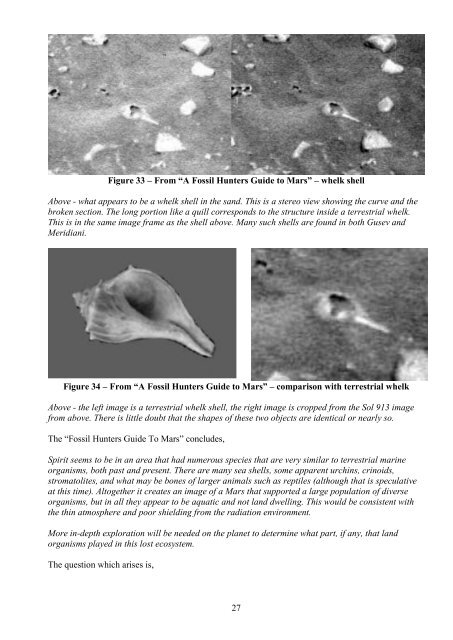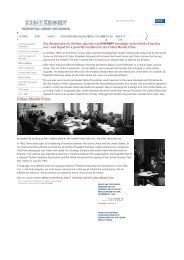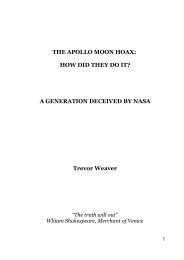14.13 - Mars Rovers
Create successful ePaper yourself
Turn your PDF publications into a flip-book with our unique Google optimized e-Paper software.
Figure 33 – From “A Fossil Hunters Guide to <strong>Mars</strong>” – whelk shell<br />
Above - what appears to be a whelk shell in the sand. This is a stereo view showing the curve and the<br />
broken section. The long portion like a quill corresponds to the structure inside a terrestrial whelk.<br />
This is in the same image frame as the shell above. Many such shells are found in both Gusev and<br />
Meridiani.<br />
Figure 34 – From “A Fossil Hunters Guide to <strong>Mars</strong>” – comparison with terrestrial whelk<br />
Above - the left image is a terrestrial whelk shell, the right image is cropped from the Sol 913 image<br />
from above. There is little doubt that the shapes of these two objects are identical or nearly so.<br />
The “Fossil Hunters Guide To <strong>Mars</strong>” concludes,<br />
Spirit seems to be in an area that had numerous species that are very similar to terrestrial marine<br />
organisms, both past and present. There are many sea shells, some apparent urchins, crinoids,<br />
stromatolites, and what may be bones of larger animals such as reptiles (although that is speculative<br />
at this time). Altogether it creates an image of a <strong>Mars</strong> that supported a large population of diverse<br />
organisms, but in all they appear to be aquatic and not land dwelling. This would be consistent with<br />
the thin atmosphere and poor shielding from the radiation environment.<br />
More in-depth exploration will be needed on the planet to determine what part, if any, that land<br />
organisms played in this lost ecosystem.<br />
The question which arises is,<br />
27





